By Brian Bell
A challenging but rewarding pursuit for collectors of World War II headgear is the acquisition of authentic helmets worn by military and civilian organizations of the Third Reich. Over the last two decades, wide- spread growth of the specialized hobby has resulted in sharply increasing prices and a plethora of fake or altered examples. Despite growing interest in Third Reich items, little attention has been given to the variety of helmets worn by Nazi police organizations. A diverse array of helmet types was worn by the German Order Police (Ordnungspolizei), one of the most complex paramilitary organizations under Adolf Hitler’s rule.
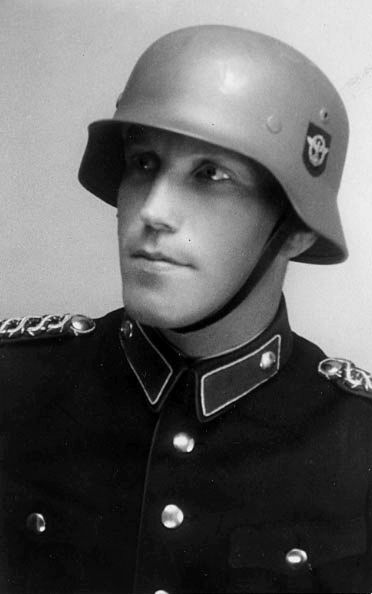
In the years prior to World War II, a combination of state, national government, military, and political organizations gave rise to a multitude of police formations throughout Germany. During these formative years, many police units were created with the intent of secretly training men to serve in the military under the disguise of uniformed police. Under this method, Germany was able to train military personnel without directly adhering to restrictions outlined by the Treaty of Versailles. When Hitler assumed full power in 1934, he sought to integrate all police units under the authority of the National Socialist Party.
The Order Police came into existence in the summer of 1936, when the German Interior Ministry decreed that all German police forces were to be absorbed into the infamous SS (Schutzstaffel) under the leadership of Reichsführer-SS Heinrich Himmler. With integrated cooperation and overlapping responsibilities, the Order Police were responsible for law enforcement within the boundaries of greater Germany. This would eventually include all occupied territories conquered by the German armed forces, beginning with the invasion of Poland in September 1939. German police were divided into three primary organizations: the regular police (Ordnungspolizei), the security police (Sicherheitspolizei), and the criminal police (Kriminalpolizei). Regular law enforcement was provided by the Order Police, while the Security Police consisted of the secret state police (Gestapo) and the security service (Sicherheitsdienst). Initially, members of the Criminal Police were police detectives who investigated violent crimes, but their brief soon expanded to investigating those believed to be subversive in nature.
In 1939, Himmler combined the various police units into a single office—the Reichssicherheitshauptamt (RSHA). The RSHA was a subsidary organization of the SS that dealt with all enemies of Nazi Germany, including civilians deemed “undesirable” by National Socialist doctrine. While not universally true of all policemen, many German police helped to enforce National Socialist ideals among the civilian population in Nazi Germany and occupied countries.
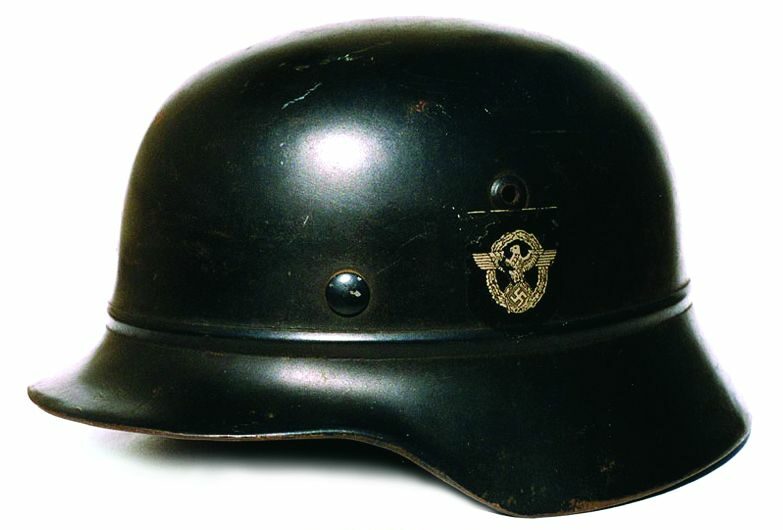
As the largest of all police organizations in Germany, the Order Police oversaw and administered the activities of a number of organizations supporting the war effort on the home front. Some of these organizations fell under the direct control of the Order Police. These included the water protection police, municipal police, rural police, fire protection police, air civil defense police, traffic police, factory police, postal police, railway police, technical emergency corps, radio police, and the health, building, and commerce police.
Like most paramilitary organizations in Nazi Germany, policemen assigned to Order Police units wore steel helmets as protective headgear. The variety of helmets worn by German police differed in style and function depending on the organization’s task and responsibilities. Helmets could be those designed for light or medium duty, or even the familiar German combat-style helmet when increased protection was called for. The number of helmet types manufactured for police use was extensive. Despite differences in helmet styles, regulations generally called for standard paint finishes and insignia to better associate the wearer with a particular office.
One helmet that was used more widely than others was also the first to be designed and produced during the Third Reich. A lightweight metal helmet for civilian police went into production in 1934. These helmets carried the universal designation “M1934” regardless of manufacturer variations. Today, this headgear is often referred to by collectors as the “civic model M34” helmet. (The term “civic” stems from postwar collector terminology used to distinguish the lightweight helmets from those issued to the military.)
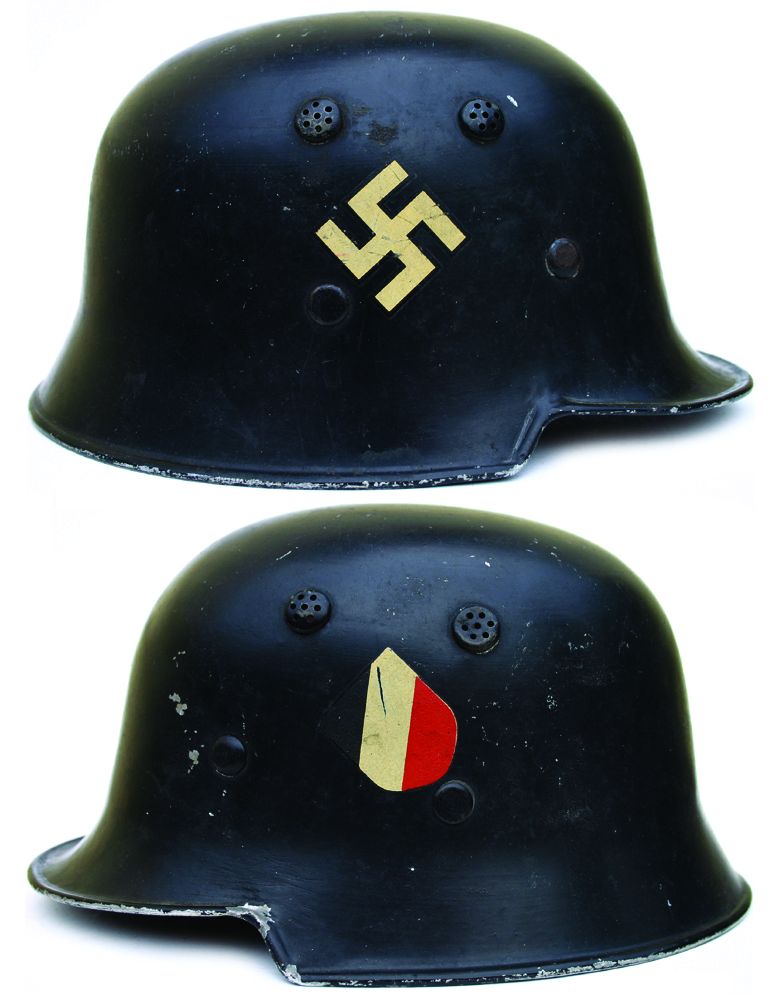
Many M34 variations were manufactured in an assortment of styles—all based on the same elementary design. The most common differences among helmet styles can be found in design features such as the shape of the visor, the angle where the visor meets the temples, the number of rivets used to hold the leather liner in place, and the location and style of the air vents. Most helmets had the manufacturer’s name stamped into the shell, but many police helmets did not receive any markings at all. The standard M34 helmet was factory finished in a smooth-satin black paint. Regardless of the manufacturer, almost all police helmets bore the twin insignia of the German police. The type of insignia and placement location became increasingly standardized as time passed.
In addition to the M34 helmet, many police organizations utilized reissued World War I-era German and Austrian trench helmets. In some cases, these heavier helmets were commercially reproduced in lighter-weight versions that bore a similar appearance to their World War I counterparts. For police units that operated within rear areas behind front lines, the standard combat helmet in the familiar M35, M40, and M42 patterns was commonly used. These helmets bore the typical field gray (Schiffergrau) paint finishes universal to German Amy, Navy, and Waffen-SS helmets.
Prior to January 1934, independent police groups existed within the various states that composed the greater part of the German nation. These groups held the responsibility for police duty in cities and townships in the provincial territories of the German Reich. On April 23, 1934, a new insignia was introduced on State Police (Landespolizei) helmets. This took the form of a large, white mobile swastika and the national tricolored shield of Germany. Helmets were typically painted a light- to medium-green color, but many were also painted satin black. Changes in color and decal combinations among police units were a result of the transition of the Landespolizei to national control.
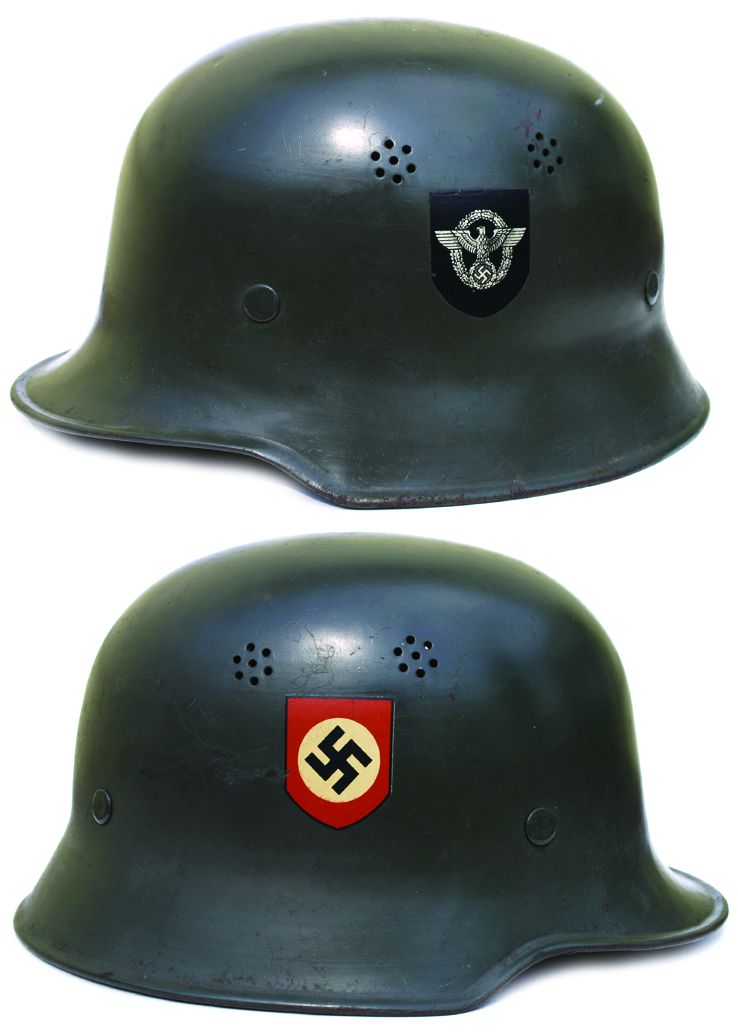
With the advent of National Socialism, police organizations came under the direct control of the SS. Himmler’s intention was to take control of all police organizations in order to manage national security issues in the Third Reich. Prior to this time, the State Police were independently responsible for overseeing police-related activities within their own state. There were 15 different independent State Police groups until all were integrated into the Order Police on July 28, 1936. As Prussia’s minister of the interior, Hermann Göring played an integral role in the early formation of the Landespolizei based on the formation of the Prussian police. The Prussian Landespolizeigruppe was the model by which all other Landespolizei groups were organized prior to incorporation into the Order Police. State Police groups were trained as military units and were often used to enforce National Socialist Party doctrine.
Although associated with the Nazis, some police officers were not members of the National Socialist Party. The depressed economic state within Germany during the mid- 1930s reduced the amount of state support that most police forces were allotted. As a result, many police members were slowly drawn into the National Socialist movement for the mere sake of obtaining much needed funding, support, and equipment to do their jobs.
The Protection Police (Schutzpolizei) was a branch of the Order Police that was responsible for law enforcement within municipal cities and townships with populations greater than 2,000. Prior to 1934, protection police were organized as separate authorities in each land or state within Weimar Germany. Schutzpolizei units were generally housed in barracks and trained in military and police protocol. The type of helmet most often worn by the Protection Police was the satin black M34 bearing two decals. These helmets were worn for both ceremonial purposes and hazardous duty. In some cases, police officers also wore satin-finished, medium-gray helmets bearing the standard insignia. It was not uncommon, however, for units to utilize the earlier World War I model helmets of both German and Austrian manufacture. Although combat helmets were generally reserved for field operations, a large number of M35, M40, and M42 combat helmets were also available for the Protection Police when needed.
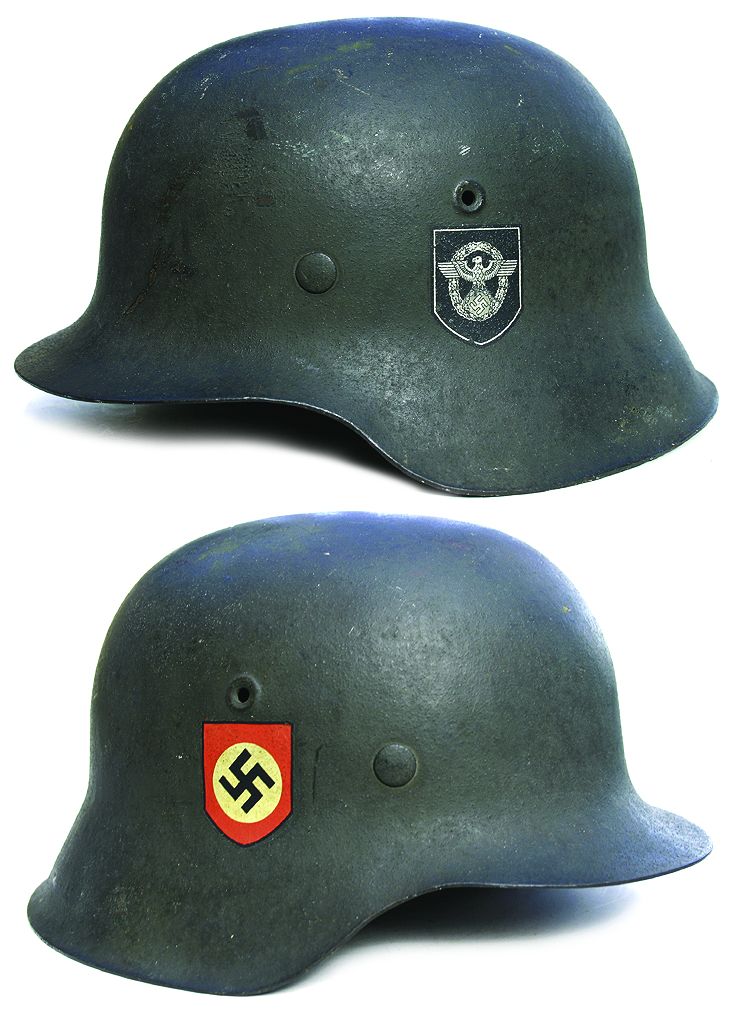
Helmets worn by the Protection Police underwent significant changes during the course of a few years. Initially, the insignia took the form of a thin white swastika and a tilted black-and-white Prussian shield. The Prussian shield was initially used by police units organized by Göring while he was in control of the Prussian government. This insignia was later used by other police units as they were centralized under Prussian authority within the larger German Reich. When the black, white, and red national colors of Germany were authorized in 1934, the Prussian shield was replaced with a tilted tricolored shield. The swastika was then updated and made thicker. In 1934, the tricolored shield was modified once again to the same design introduced for wear on all military helmets.
When all police units were organized under the Order Police in 1936, the insignia was once again changed to a standard police eagle and the National Socialist Party decal. Initially, the eagle decal had no border, but many police units later adopted a version with a silver border. The decal with border initially was intended for use only on firemen’s helmets, but the silver border around the shield’s edge proved helpful in making the insignia more visible when placed on black-painted helmets. During these many transitions, it was common for some police units to make application mistakes when placing insignia on their helmets. As a result, an occasional helmet can be found where the swastika and national shield are on the opposite side from stated regulations. In addition, some police helmets had the tri-colored decal placed vertically rather than at an angle.
The Luftschutzpolizei (Air Civil Defence Police) was the civil protection service in charge of air raid defense and rescue. Air Civil Defense Police were issued M35, M40, and M42 combat helmets with a protruding bead running around the midline of the helmet shell. This protrusion was formed in the shell at the time of manufacture to denote that the helmet had imperfections that rendered it unusable for regular combat duty. Luftschutzpolizei helmets were initially painted a satin dark blue. Later, this color was changed to a matte blue-gray paint. Helmets were equipped with one of the many civic model liners common to other non-military helmets.
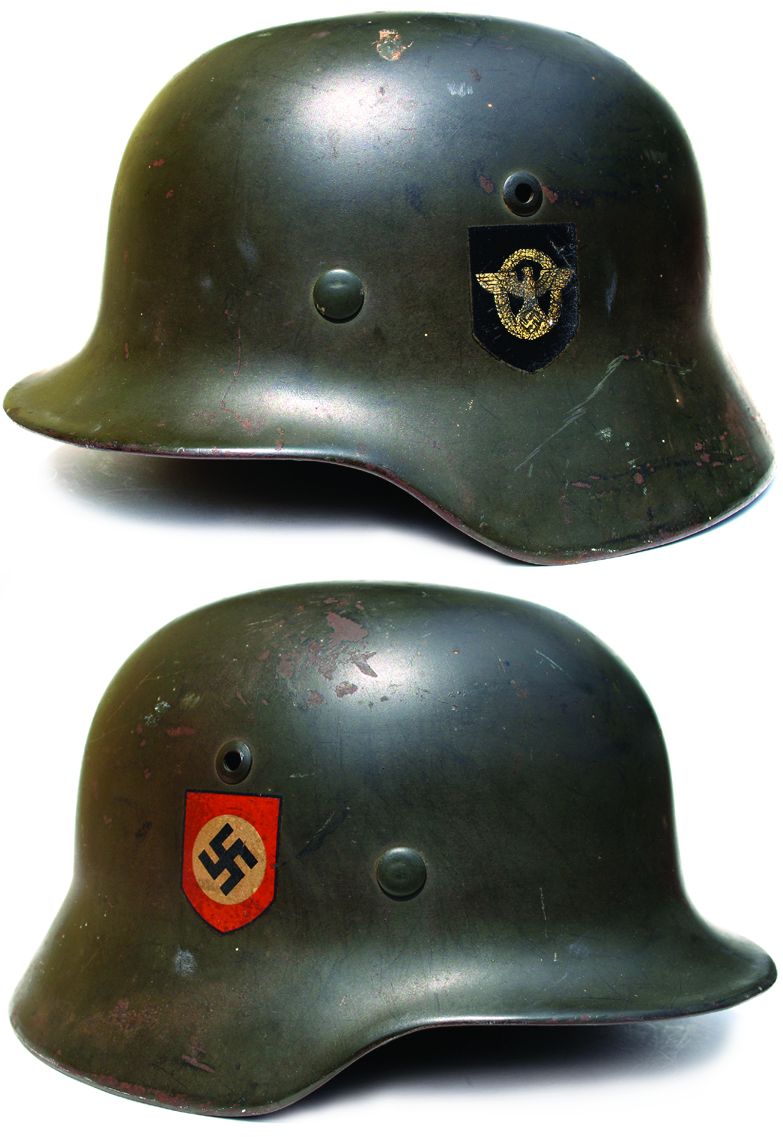
Most of the helmets were adorned with standard police insignia; however, some late-pattern helmets bore no insignia whatsoever. Early-model helmets possessed the unbordered police eagle decal on the left side, with the National Socialist Party decal on the right. This was due in part to the fact that many of the beaded M35 helmets were initially issued to the Security and Assistance Service (Sicherheits und Hilfdienst) prior to the creation of the Luftschutzpolizei in 1942. Later, many of these helmets were repainted and redecaled with the updated bordered police eagle decal on the left side and the National Socialist Party decal on the right. Some of the helmets used by the Air Civil Defense Police were in fact standard Luftschutz helmets bearing the winged emblem of the Air Protection Warning Service over the visor. As time permitted, many of these helmets were also repainted and redecaled to conform to updated police regulations.
For those interested in diversifying their headgear collections, authentic examples of German police helmets are still readily obtainable at reasonable prices. Today’s avid collector can gain a jump on market prices and increase the potential value of a collection by securing examples of these and the many other helmets worn by Nazi police organizations. At least for the present, standard civic model police helmets in above-average condition are valued between $300 and $400, a sum that is considerably less than that for other combat model helmets from the same era.
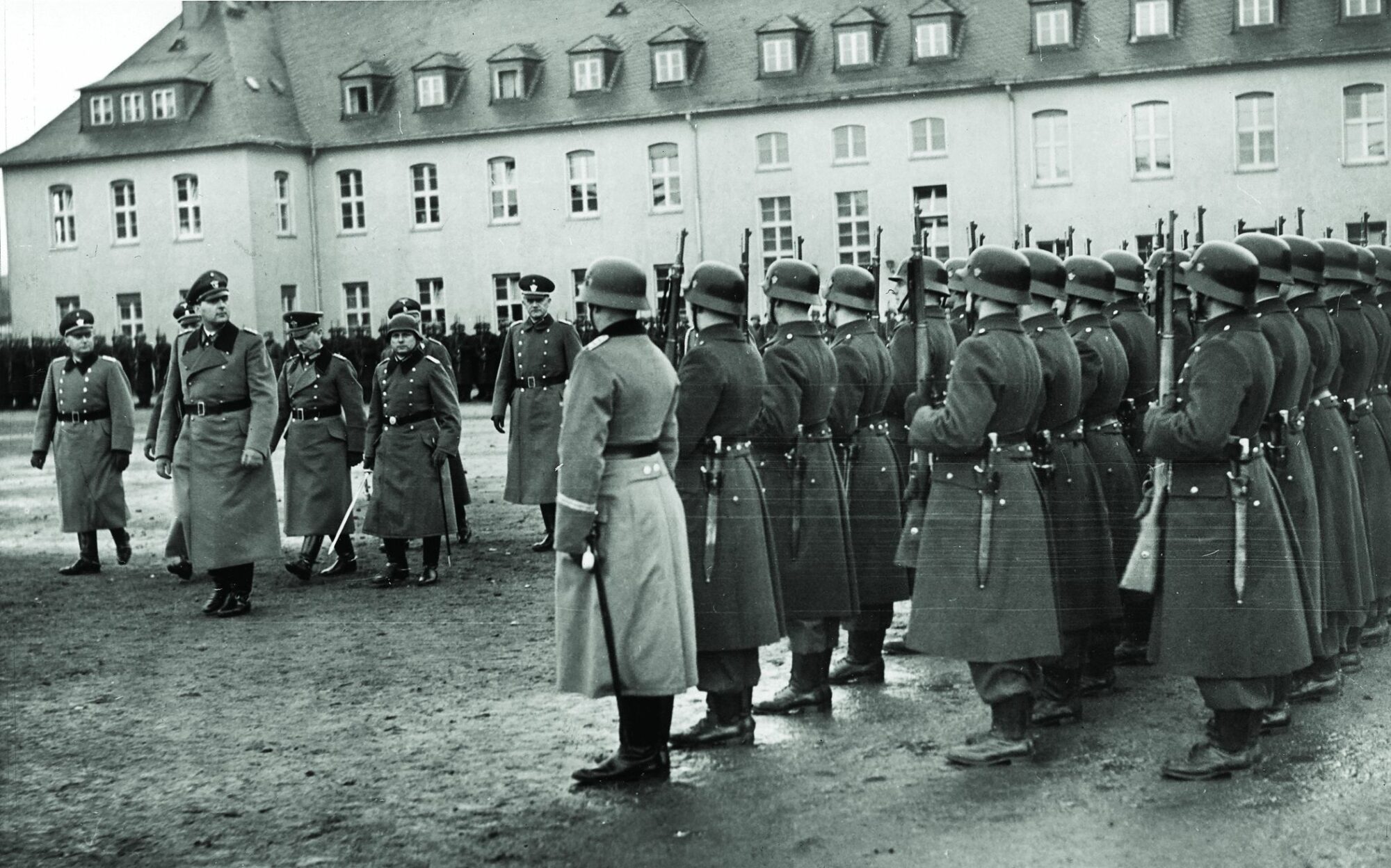
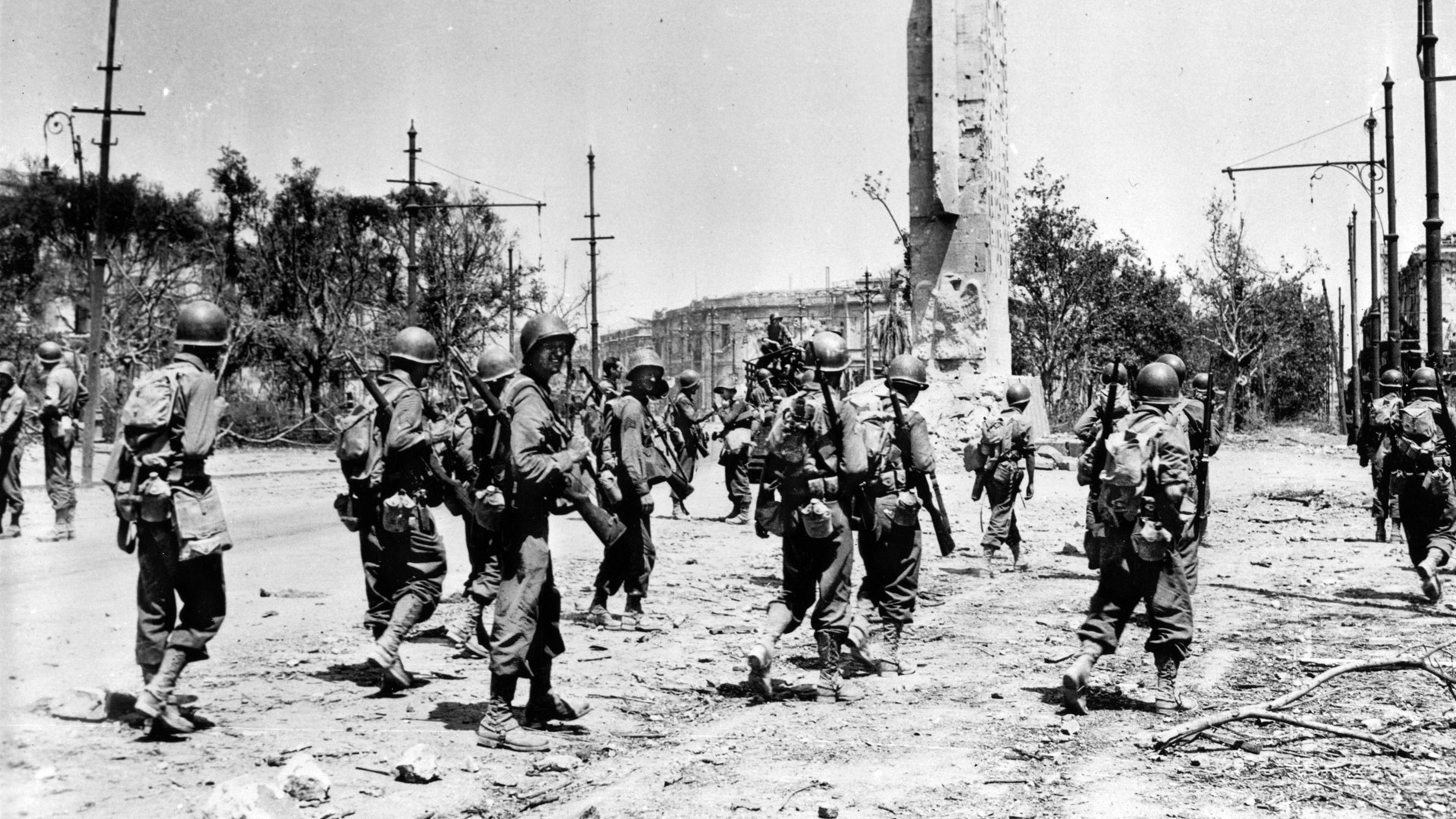
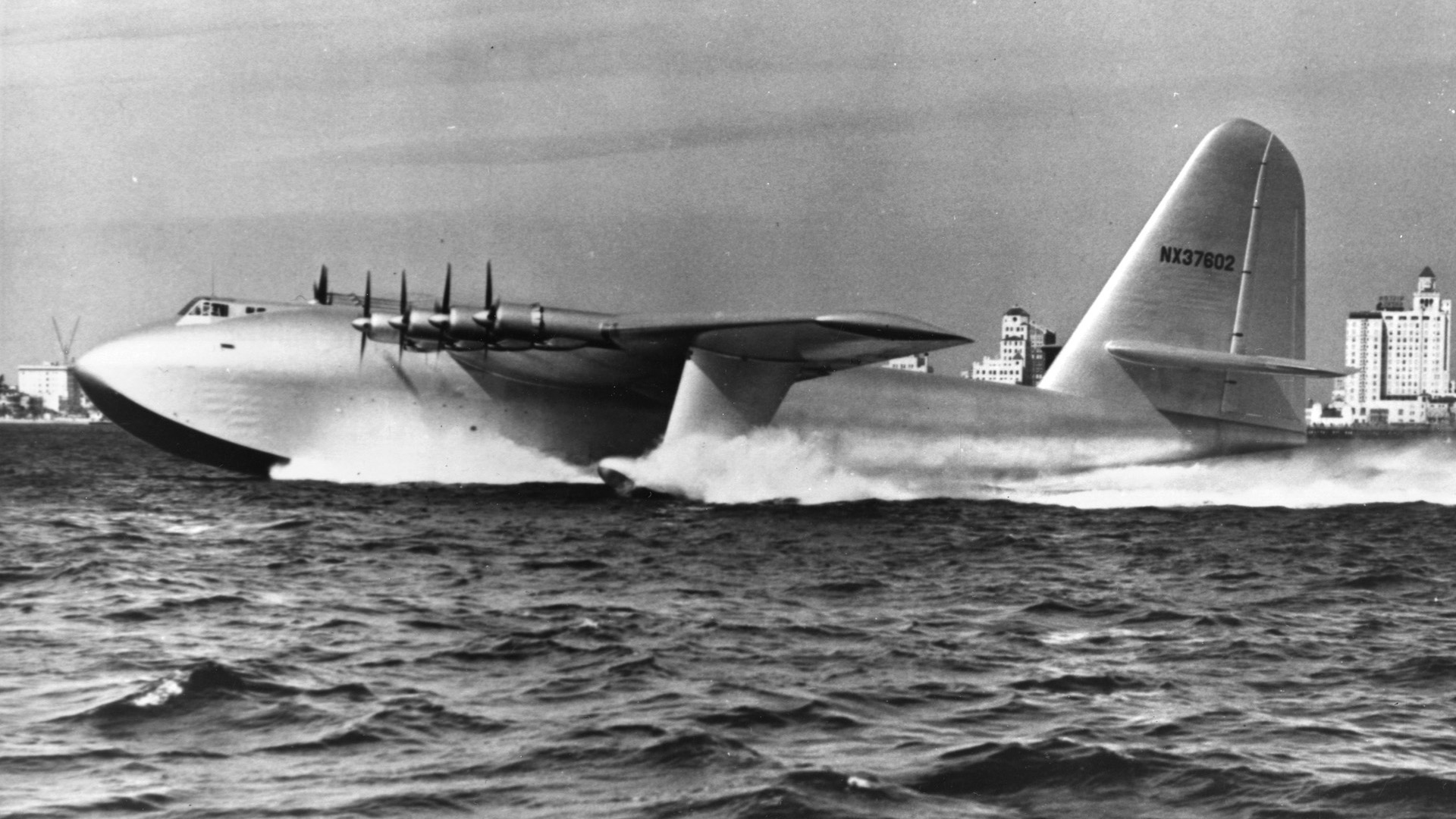
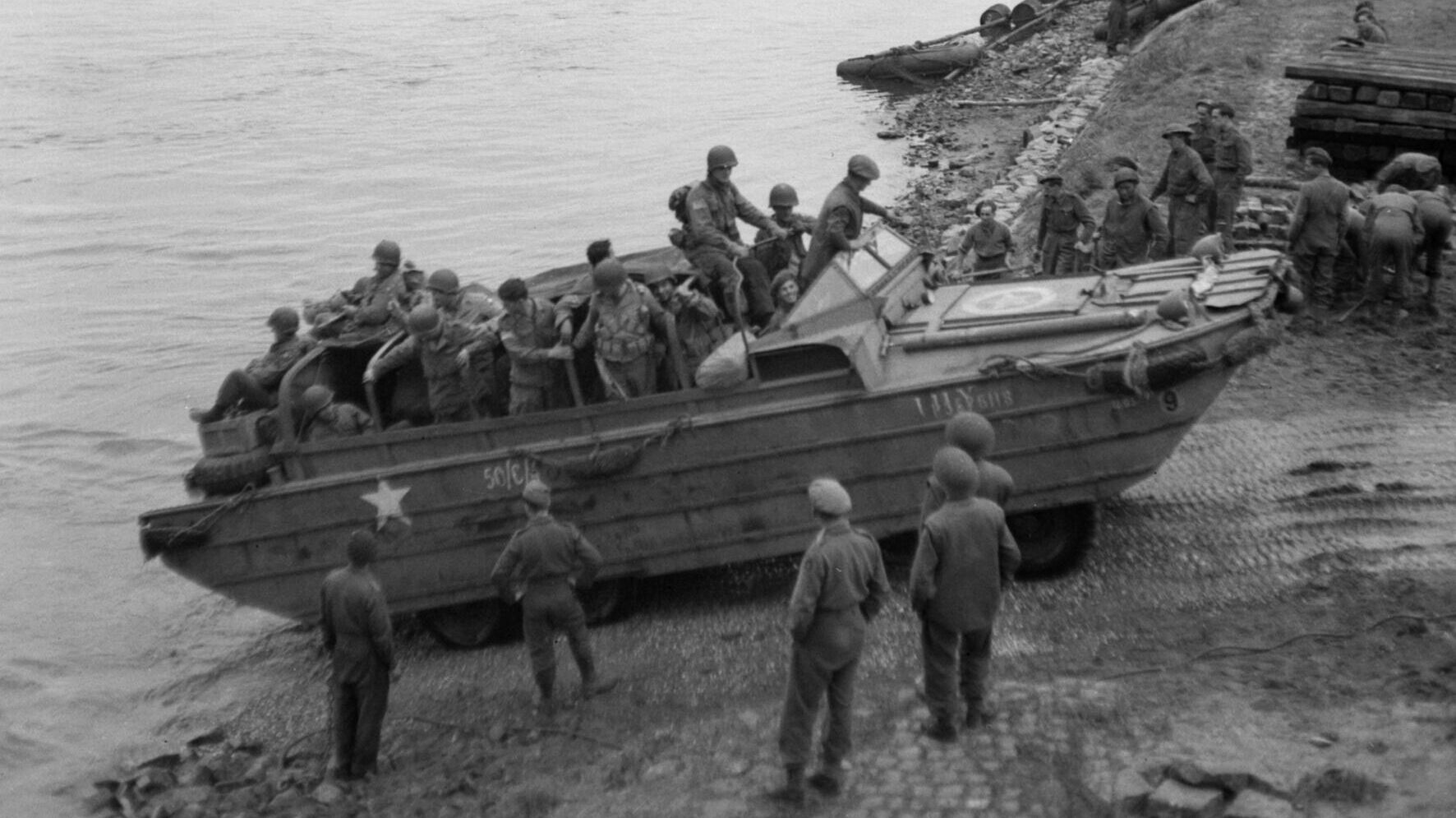
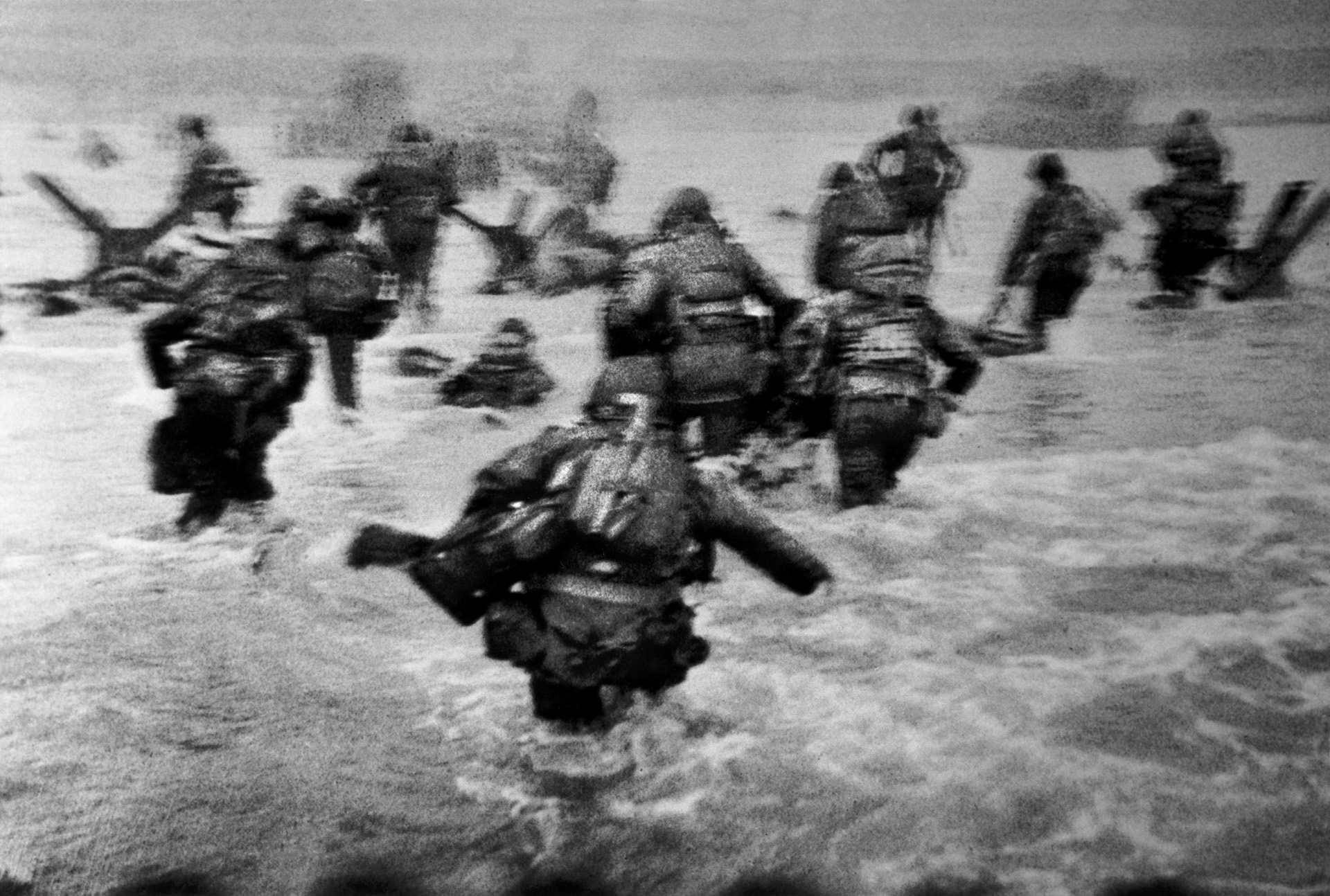
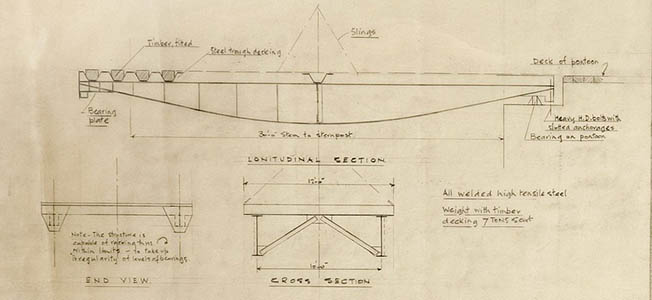
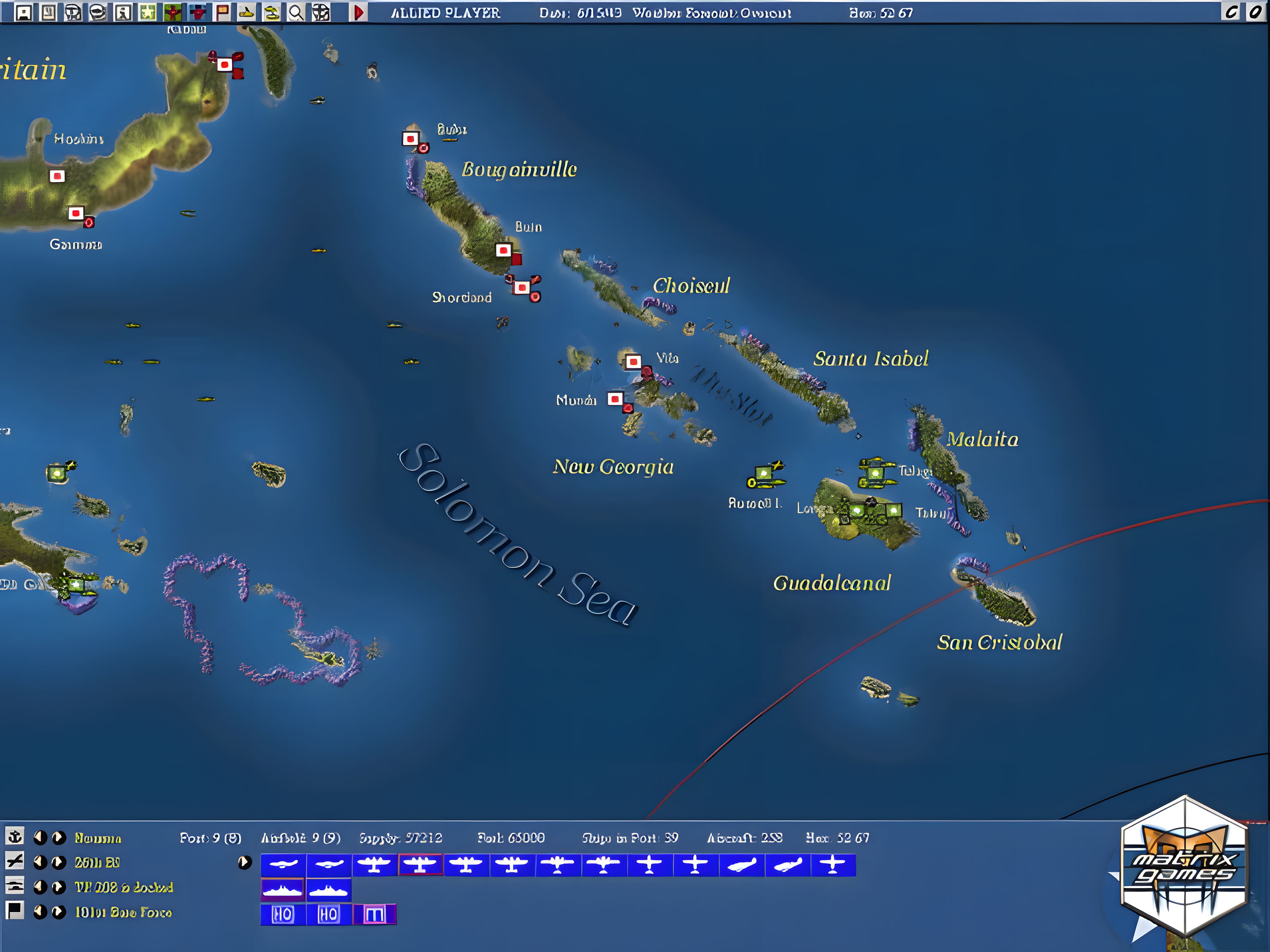
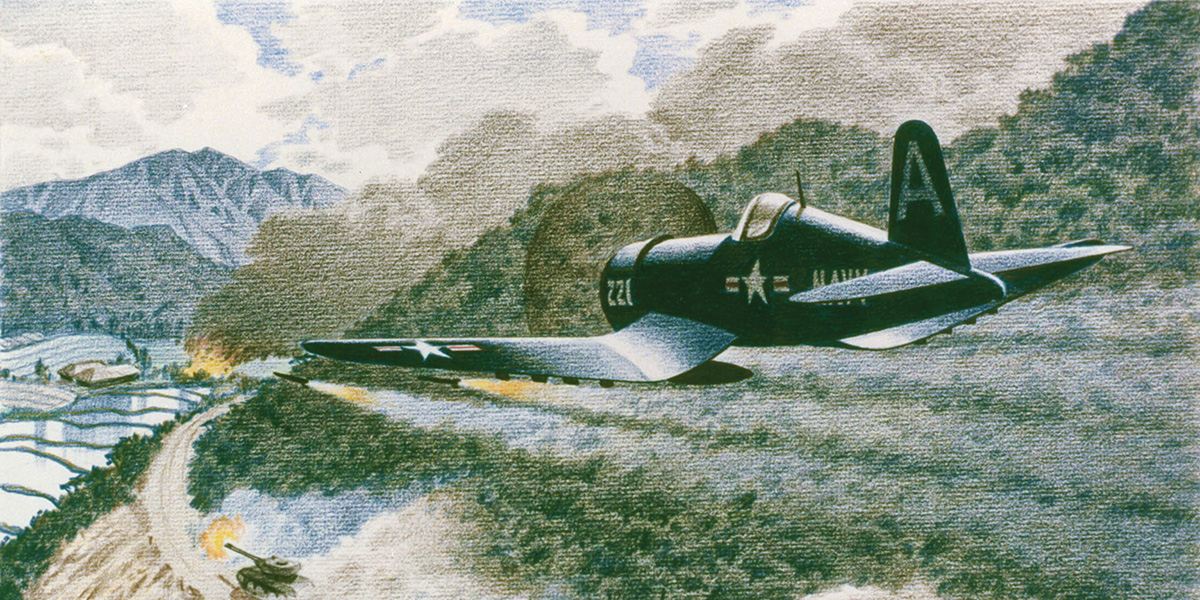
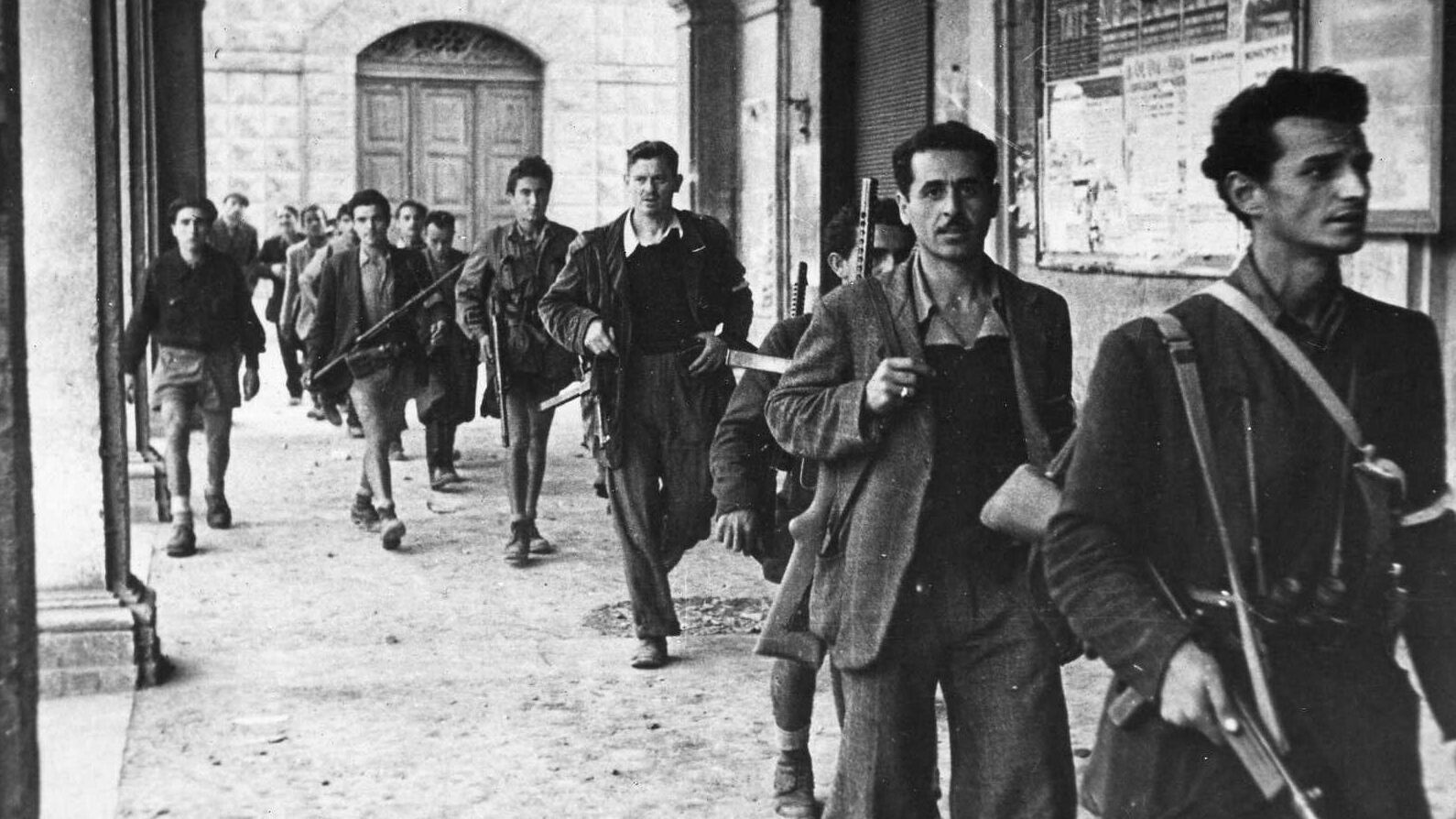
Join The Conversation
Comments
View All Comments